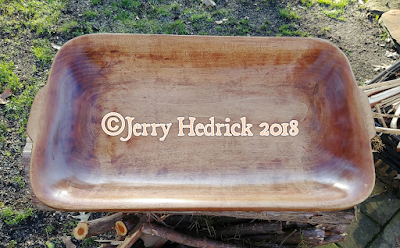Breaking Bread with the Past: Making an 18th Century Dough Bowl
The Art of Chipping Away at a Block of Maple Until Something Useful Appears
 |
| The finished bowl, ready for use. |
A good dough bowl was often handed down through a family, typically to the oldest daughter, as both an heirloom and a reminder of the loving hands that prepared their daily bread. It was not uncommon for a future husband to carve a wooden dough bowl for his bride as a wedding present.
How A Dough Bowl Was Used
The ingredients for the bread--
typically flour, yeast, salt, water or milk, and a pinch of sugar or perhaps
and egg--were mixed together and kneaded into dough in the bowl, then covered
with a damp cloth and left to ferment and rise. A crafty bread maker might use
barm, the yeasty
foam skimmed from the top of beer during the home brewing
process, as the yeast. Or, in the sour dough tradition, they might use a pinch
of fermented dough left over from the last round of bread making. Wooden bowls
were preferred as the wood held the heat generated by the fermentation of the
yeast. I would also posit that the wood itself might hold on to some of the
particles of yeast from previous use, aiding in the acceleration of the rising
of the dough. In addition to being used
for bread making, these bowls had other uses such as chopping or mixing bowls,
salad or serving bowls, and could even be used for working butter (the process
of washing and kneading the butter to work out the residual buttermilk).
 |
| A small batch of yeast dough begins to rise. |
The Materials and Process for My Recreation
 |
The scorp helps you quickly scoop
out the center of a bowl.
|
So, when you are ready to create
your own bowl, don’t wheat another minute. You’ll knead to rise to the
occasion, and don’t let anyone punch you down. Don’t loaf around, and you’ll be
a legend in the baking. Crumb to think of it, it’s a fun project, crust me.
Last but not yeast, it’ll show you are well bread. I hope my bread puns don’t
make you roll on the flour laughing. Or groaning!
 |
Bottom of finished bowl; I added finger grooves to the end grips.
Dr. Jerry Hedrick Bayside Board Medicine License Charges Virginia Beach
|


